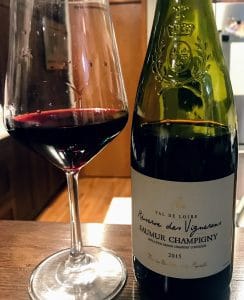One of the wine Facebook accounts I follow posted an interesting question on their page. If you’re at a restaurant that features your wine, would you order it?

Even though the page is public, I’m not going to link it here because several of the replies from industry folks I respect was downright disheartening. Reading the thread left me scratching my head and going “Why?”
It makes sense for importers and distributor reps to order wines from their large portfolios. They need to know how these wines taste and often don’t get a chance to visit every winery they represent. However, as a consumer, it’s something that I would hate to see my favorite winemakers and winery owners do.
Lord knows that they have plenty of opportunities to try their wines at the winery and tasting events. With a few small exceptions, ordering their own stuff at a restaurant is either egotism running amok or an invitation for a bad case of cellar palate.
What is Cellar Palate?

The original masters of cellar palate. Granted, it didn’t hurt them much, but that is one of the perks of having a near monopoly.
Jancis Robinson describes cellar palate as “what happens when a wine producer becomes too acclimatised to their own wines or those of their neighbours.”
Robinson’s piece gives several excellent examples of how cellar palate on a regional level has adversely impacted the wine industry.
But I’m not here to talk about regional cellar palate or a homogeny of styles from an area. Instead, I want to point out the poor form and foolishness of any winemaker or winery owner to regularly buy their wines when dining out on their own.
That is because cellar palate is a self-inflicted wound that is easily avoided. Yet why do wineries keep stabbing themselves in the back?
A winemaker’s palate is like a knife.
Its usefulness is limited by how properly aligned and sharp it is. Professional chefs hone their knives with steel every time before they use them. They also never let their knives go too long without sharpening.

I thought about taking a stab at a metaphor for high-acids white here.
A winemaker or winery owner who only regularly drinks their own wine is keeping their honing steel in the block and the sharpener at the store.
They’re letting their palates become dull and desensitized to both the beauty and frailty in their winemaking.
That might not immediately hinder them if they’re producing tasty wine that sells. But eventually, in a competitive market, every style goes out of fashion. A dull palate leads to senses that aren’t sharp enough to pick up on those cues.
Ambitious winemakers and forward thinking winery owners should always be honing their palates.
They should always be trying what else is out there. New grapes, new regions, new styles. Every chance and every opportunity–especially when they are dining out.
Yeah, it’s great that this restaurant features your wine. But it’s not only your wine that they’re featuring. Paying attention to what the sommeliers and beverage directors are selecting to go with their cuisine is valuable intel that is literally right in front of you. Take advantage of that.
Even if you are just ordering your neighbor’s wine down the road, it’s still better than ordering your own wine. You’re at least honing your blade, if not sharpening it by trying something radically different.
Now, yes, there are always exceptions.

And, of course, at sponsored winemaker’s dinners.
I’m not talking about a blanket ban on a winery ever ordering their wines. There are situations–such as when you are taking a distributor rep, media or new client to dinner–that merits ordering your wine. Then it’s educational because these people need to be trying these wines if they are to sell them or understand the winery.
But the key here is that the wine is ordered for the guests’ benefit and not for the winery’s ego.
There is also an educational benefit to a winemaker or winery owner ordering an older library vintage of their wine that is featured on a list. Not only will this be a good check-up of how the wine is aging but it can also demonstrate how a particular restaurant is storing their wines.
But what is not a good reason is the ludicrous idea that a winery ordering their own wines is “showing support to an account.”
Oh, give me a break.
You support your accounts by making high-quality wine that their patrons are going to want to order. You support them by marketing your wines effectively and getting the word out about where consumers can find them (when the law allows that).
And you support your accounts by offering samples and training for their staffs. That’s a great time to open up and taste your wine. But paying restaurant mark-up on your own wine to artificially inflate sales is not “supporting your accounts.”
It’s either ego or foolishness. Either way, it’s a habit that quality-minded wineries should cut out.


